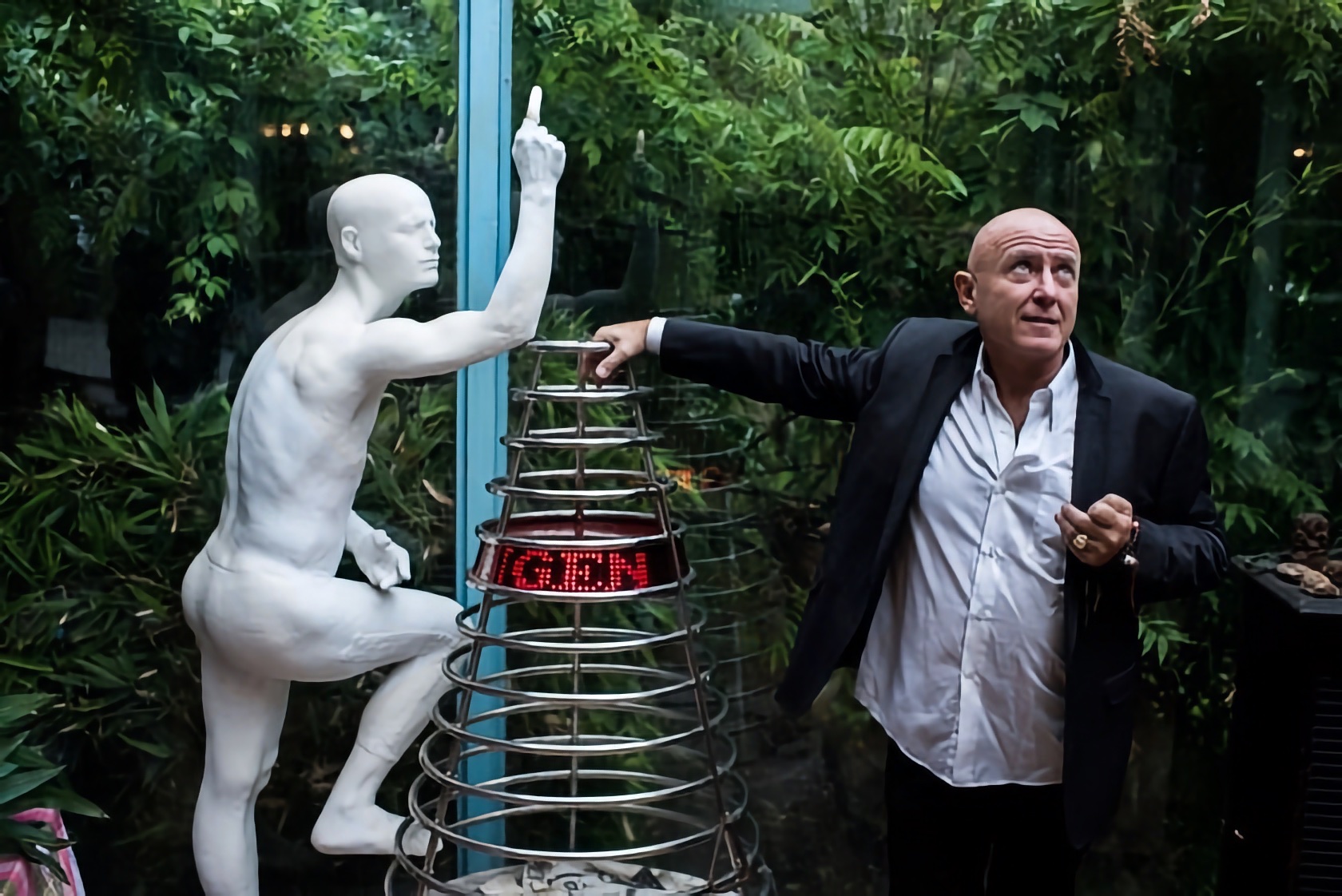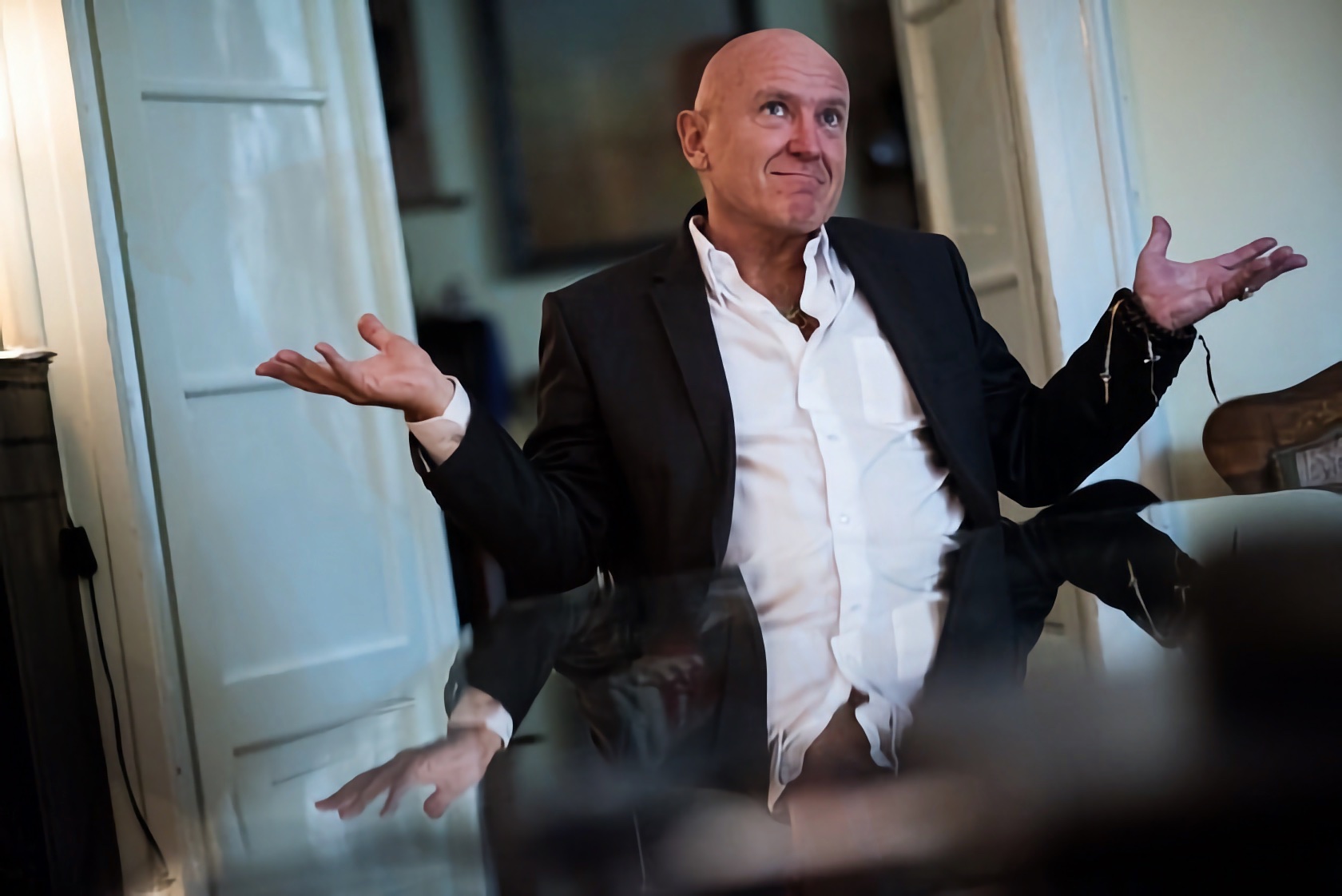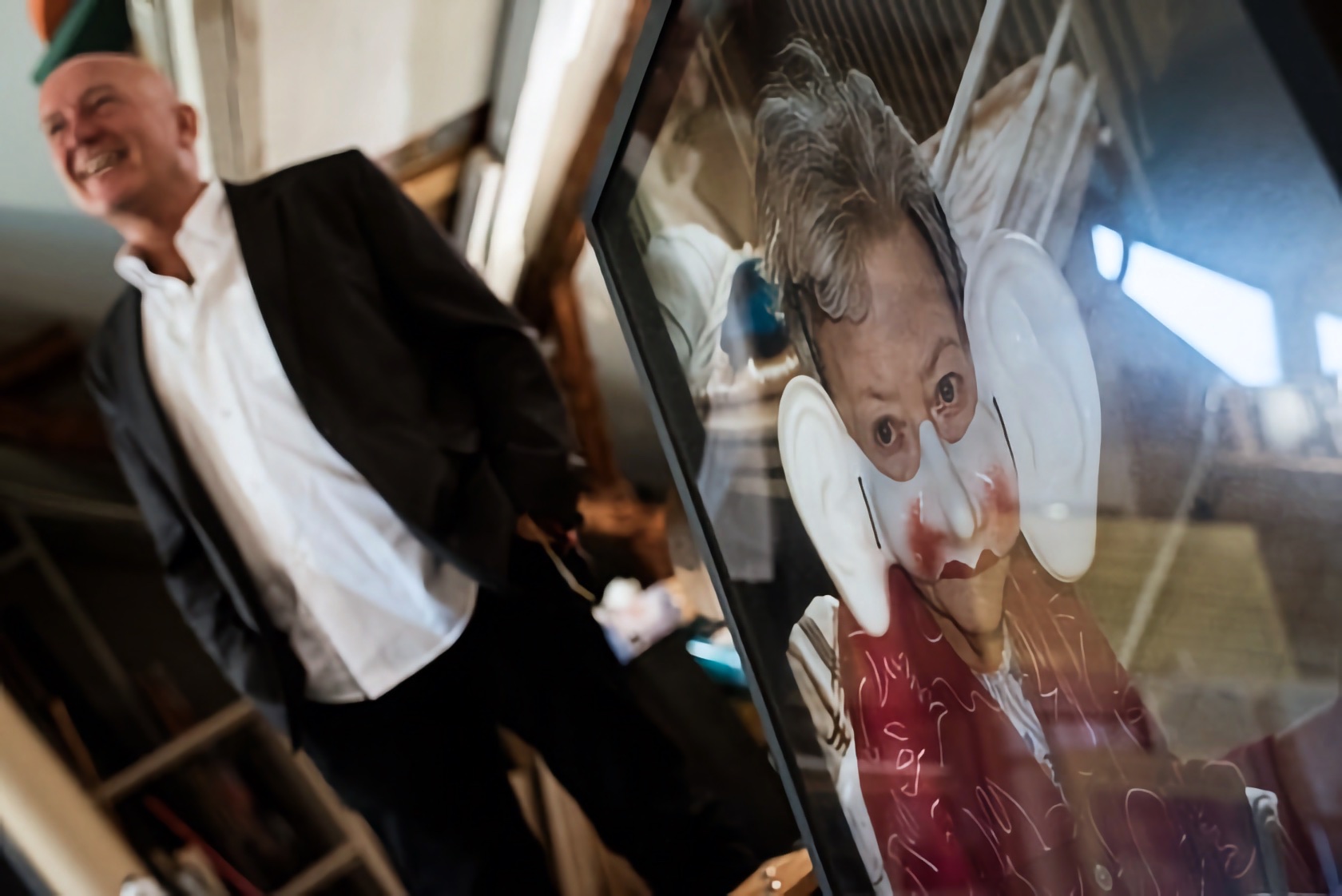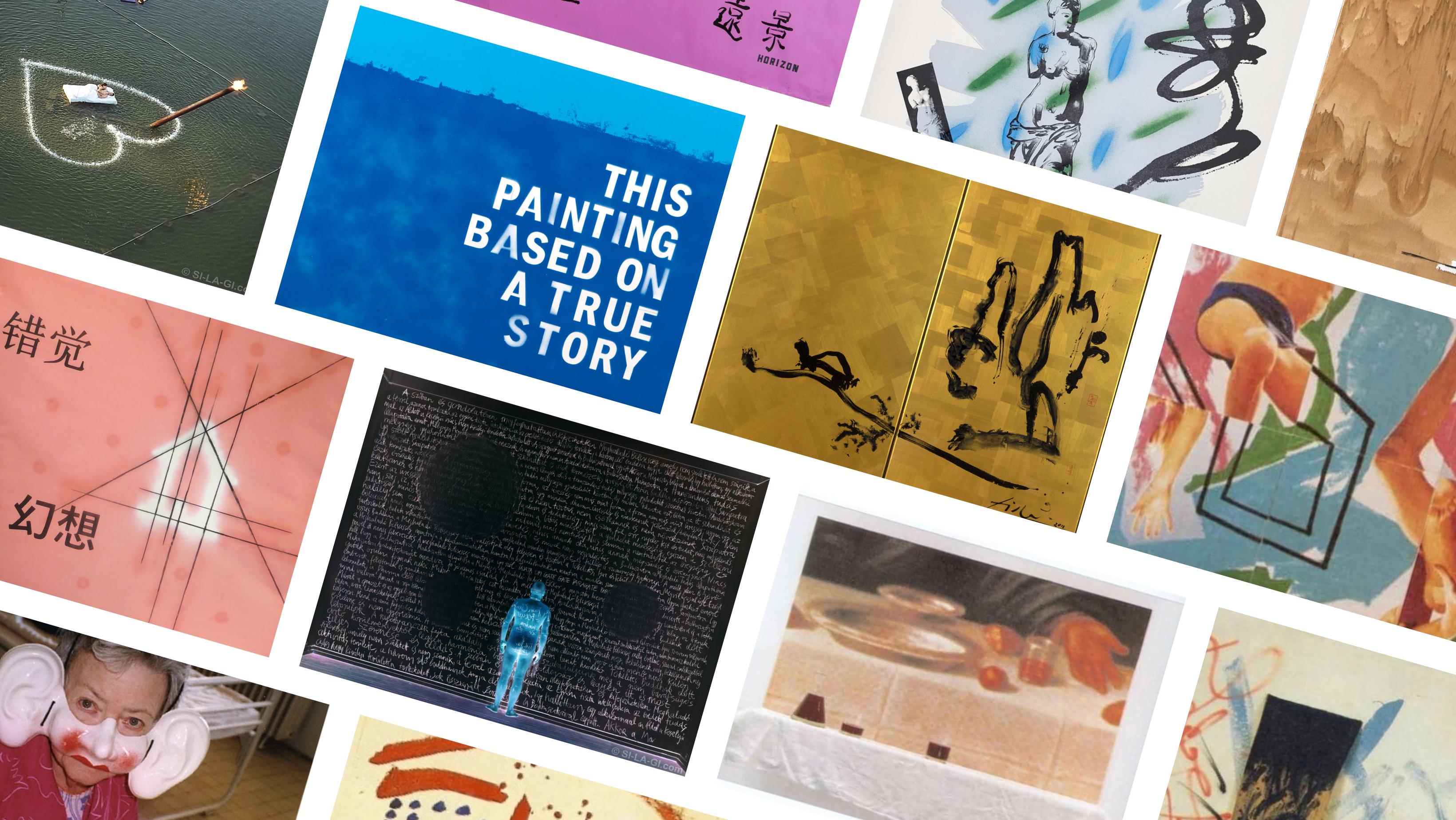SI-LA-GI Interview
by HVG Magazine
Originally published on HVG.lu, 2013
The Hungarian Artist smoked weed with Jimi Hendrix, made friends with Andy Warhol, and spent years in Buddhist monasteries in seclusion from the world. Szabolcs Szilágyi, known by his stage name SI-LA-GI, has travelled five continents to become an internationally renowned painter and artist whose main work is his own life. Interview.
hvg.hu: Your life has been filled with travels and adventures from an early age. What drives someone to defect at the age of 16?
SI-LA-GI (Szabolcs Szilágyi): I was attending an art high school and felt increasingly that the space there was too confining for me. I feared that staying would eventually lead to a confrontation or even distortion of my personality. At 16, one is immensely curious. Looking back, I would say curiosity was my main motivation. Four friends and I planned our defection for a year. I was the mastermind, but only two of us made it to the end, the others dropped out.
It was 1966, and leaving the country was quite risky. Our journey was incredibly adventurous. Looking back, it's unbelievable what we went through to reach our goal: hitchhiking, then swimming across the Adriatic for 12 hours, being rescued, running away, first to the police, then to a hospital. After that came a series of refugee camps. Since our ultimate destination as young artists was Paris – what else could it be – we were disappointed to learn that France was not accepting refugees. Apart from overseas countries, only Sweden was an option, so we didn't have to think long before making our choice, to not stray too far from our dream scene.
hvg.hu: Was there ever a concern you'd be sent back home?
SI-LA-GI: The Hungarian government wanted to bring me back through the Red Cross, but my mother, understanding the tragedy that would mean for me if I were called back, declared she didn't want to see me again. From that point, I was free to start a new chapter in my life. I went to school, learned Swedish, and then moved to Stockholm to attend Konstfack's painting department. A year later, I continued my studies at the Academy of Fine Arts. I quickly realized that Stockholm was far from being Paris. The academy was quite provincial in the 60s and 70s, lacking a live connection with the Moderna Museet led by Pontus Hulten or with European and American art trends. Of course, being in an environment where everyone is constantly creating was very inspiring, but I disagreed with many things. It was 1968, the news and impact of the Paris and Prague movements reached us, but unfortunately, it was limited to leftist propaganda painting. Let's just say it didn't match my rather free ideas about art. I felt confined again and didn't want to stagnate at that level. I had no choice but to make another drastic change: I went to America.
hvg.hu: America in the early 70s: it must have been the dream field for every searching artist. How did you experience the transition to a scene of artistic experiments and total self-realization after a period of relative isolation?
SI-LA-GI: Exactly like that. Although America was just the beginning of my travels. I lived intensely and didn't pass by anything without trying it out. I had fantastic experiences, new impulses, unbelievable situations, incredible encounters with free-thinking, creative people. To mention a few examples: I smoked weed with Jimi Hendrix, and in Key West, fate brought me together with Tennessee Williams in a similar situation. Later, through my creations, I met several recognized American artists, like Andy Warhol and musicians, painters, writers active in the Village. I was very free and even more curious during this period, but my travels were also a constant source of recharging. At one point, I found myself in a country not indoctrinated by history, where I could absorb respect for individuality and spirituality.
My first trip towards India ended in Lebanon. Later, I spent a short period in a junkie hotel in Istanbul, addicted to opium, intrigued by the worlds of Rimbaud and Huxley. It all unfolded quite inevitably. I tried and experienced everything I was curious about, and once I knew what it was all about, I stopped using mind-altering substances from one moment to the next, as I had other things: primarily my art and karate.
hvg.hu: Was it parallel to this or only afterwards that you turned towards Eastern philosophies?
SI-LA-GI: The motivation to go to India was already there, but looking back, I'd call it more of a romantic longing. I felt I knew too little about Indian art, music, architecture, religion, and philosophy, all of which I found important and interesting. But the real turning point was the arrival of a Japanese karate master. By then, I was back in Stockholm, studying art history at the university, when Hiromi Suzuki master arrived. From him, I learned one of the traditional styles of karate, Okinawa goju ryu karate-do, which I practiced for more than a decade. Its spirituality, permeating my everyday life, clearly paved the way towards Buddhism.
Another defining experience was meeting the Karmapa, one of Tibet's enlightened masters. Our first meeting took place in 1974. It was absolutely directive for my life. I simply felt that this was the path and method leading to the essence. Later, in '78, from India – where I was living near Darjeeling in various monasteries at the time – relying on my instincts, I walked through the Himalayas to Sikkim in three days to see His Holiness again. Sikkim was still an independent kingdom then, not really accessible legally, as it was a militarily sensitive area.
hvg.hu: Your life's journey has led you from one event to another, each outcome being, to put it mildly, uncertain. Were you never afraid?
SI-LA-GI: Not for a minute. On one hand, there's a constant motivation in me, an insatiable curiosity towards the real nature of things – not through books – and on the other hand, I'm fully aware that this is my life, which is quite short but filled with possibilities. I simply feel that if the motivation is strong enough, then there's a way to knowledge, recognition, and thus to substantial realization. Given a situation: I'm curious about my role in it. What reactions does it evoke in me? How can I relate to this situation adequately, regardless of its outcome, what conclusions, recognitions do I come to? Do I identify with the event, or do I observe it as an outsider? When and why do I choose one over the other? Do I choose at all?
hvg.hu: Amidst all these concrete and spiritual adventures, how did creation fit into your life? To what extent can we talk about a process, and how hectic is this activity?
SI-LA-GI: It varies, there are no established patterns that I consistently follow. For example, during my trips to India, I sometimes didn't even bring a camera because I didn't want to fall into the trap of documenting life; I found it more important to perceive and live it. Other times, I set out with the intention of creating. For instance, I went to Thailand to work with Thai and Chinese artists, and this decision bore fruit in numerous jointly created paintings.
I don't think the purpose of art is to copy something out of our heads. Creation is a delicate process, a kind of essence, which includes a series of external, internal, conscious, and random momentary changes, as well as the presence of vigilance and unemotional absolute presence. Significant creation requires courage, freedom, and strength. Whenever I feel the need to express myself visually, I always find a way to do it.
hvg.hu: Is it important to you how others react to your works? How conscious is the creation process?
SI-LA-GI: Most artists master the techniques, then their identity and form world crystallize, and they repeat this for decades. We say they have developed their style, their creative personality. I see it absolutely differently. Art for me is a reaction and an experiment. It requires a triggering stimulus that makes me feel compelled to respond visually. These can be personal motivations or philosophical, political, social causes. Art is a tool and opportunity to be personal, provocative, thoughtful, experimental, independent, free. To bring myself to the surface and at the same time question myself.
hvg.hu: How does the dynamic part of your self reconcile with the infinite calm of Buddhism?
SI-LA-GI: Everything is compatible and interconnected if we recognize the connecting threads and reasons. The goal of Buddhism is not to achieve calm but to recognize the true nature of things and relate to them substantially. In my works, the Buddhist perspective on (worldly) phenomena, indirectly and in various forms, is present. Naturally, I don't use traditional Buddhist forms but contemporary tools, similar to Duchamp or Cage – who was known to be a Buddhist. I share their mindset, their way of thinking.
My works are rooted in a blend of Western and Eastern cultures, my personality, my life, and Buddhist philosophy, living in symbiosis. Therefore, a different kind of, definitely greater openness is needed on the part of the audience for understanding. It's important not to be satisfied with the opportunity presented by the spectacle, as we can't get closer to the essence based solely on art history knowledge and viewpoints. I believe if someone deals with insignificant things, their creation can only be insignificant. The conclusion is given: we must live every moment as new and unrepeatable, able to respond creatively to processes, but this requires constant conditioning of our consciousness.
hvg.hu: How did you become a Buddhist?
SI-LA-GI: I had numerous questions about existence and non-existence, to which I found no satisfying answers in any philosophical or religious teachings or theories. To this day, I enjoy debating with lamas, rabbis, priests, people immersed in religions, but I received logical, acceptable answers to my nitpicking questions from Tibetan masters. Buddhism is not a religion but provides tools and methods for understanding consciousness. This is what I practice.
hvg.hu: Crossing boundaries, both physically and mentally, has played a prominent role in your life. What's the reason for this?
SI-LA-GI: Indeed, I've never been able to accept boundaries in any form. When I counted, it turned out I had crossed international borders illegally more than 15 times. As a metaphorical boundary-crosser, I have a considerable "record." What's the reason for this? Perhaps curiosity. I feel I need to know what's on the other side; these experiences, if you will, exciting trials, made me who I am. The greatest boundary crossing, death, is still ahead of me. According to Buddhism, when the soul leaves the body – in the intermediate state called Bardo – emotional experiences appearing real become much, much stronger, precisely eight times stronger. I try to live in such a way that I can be meaningfully present at this boundary crossing and not get lost.



Related article :
In-Depth Interview with SI-LA-GI by János Kurdy-Fehér (2023)
